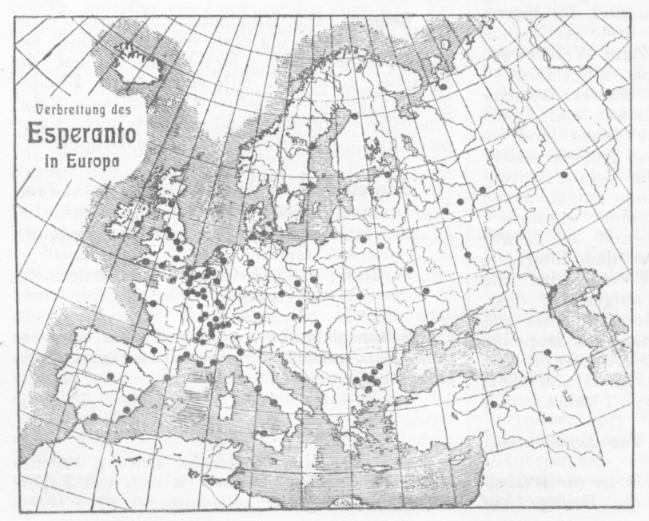|
Gerda Malaperis!
'' eo, Gerda malaperis!, label=none'' ( en, Gerda Disappeared!, italics=yes) is a novella by Claude Piron, one of the most famous works of Esperanto literature. In the novella, dialogue begins simply and progresses in difficulty using everyday vocabulary (with word-lists available in various languages). It is suitable for beginners trying to improve their grasp of the Esperanto language, and includes rehearsal of basic grammar and an entertaining story. The mystery begins when three college students witness the strange disappearance of Gerda, a woman who is an expert in 'cryptic languages'. Published as a book, ''Gerda malaperis!'' has since been incorporated into electronic courseware. A movie is available on DVD. External links La Gerda-kurso en la reto- Advanced, 25-part Esperanto course based on the text of the novella. "Gerda malaperis!" on lernu.net- Intermediate Esperanto course, 25 chapters and epilogue. Esperanto-Jeunes- "Gerda Malaperis!" and other Esperanto courses ... [...More Info...] [...Related Items...] OR: [Wikipedia] [Google] [Baidu] |
1987 Gerda Malaperis!
File:1987 Events Collage.png, From top left, clockwise: The MS Herald of Free Enterprise capsizes after leaving the Port of Zeebrugge in Belgium, killing 193; Northwest Airlines Flight 255 crashes after takeoff from Detroit Metropolitan Airport, killing everyone except a little girl; The King's Cross fire kills 31 people after a fire under an escalator Flashover, flashes-over; The MV Doña Paz sinks after colliding with an oil tanker, drowning almost 4,400 passengers and crew; Typhoon Nina (1987), Typhoon Nina strikes the Philippines; LOT Polish Airlines Flight 5055 crashes outside of Warsaw, taking the lives of all aboard; The USS Stark is USS Stark incident, struck by Iraq, Iraqi Exocet missiles in the Persian Gulf; President of the United States, U.S. President Ronald Reagan gives a famous Tear down this wall!, speech, demanding that Soviet Union, Soviet leader Mikhail Gorbachev tears down the Berlin Wall., 300x300px, thumb rect 0 0 200 200 Zeebrugge disaster rect 200 0 400 200 ... [...More Info...] [...Related Items...] OR: [Wikipedia] [Google] [Baidu] |
Claude Piron
Claude Piron, also known by the pseudonym Johán Valano, was a Swiss psychologist, Esperantist, translator, and writer. He worked as a translator for the United Nations from 1956 to 1961 and then for the World Health Organization. He was a prolific author of Esperanto works. He spoke Esperanto from childhood and used it in Japan, China, Uzbekistan, Kazakhstan, in Africa and Latin America, and in nearly all the countries of Europe. Life Piron was a psychotherapist and taught from 1973 to 1994 in the psychology department at the University of Geneva in Switzerland. His French-language book ''Le défi des langues — Du gâchis au bon sens'' (The Language Challenge: From Chaos to Common Sense, 1994) is a kind of psychoanalysis of international communication. A Portuguese version, ''O desafio das linguas'', was published in 2002 (Campinas, São Paulo, Pontes). In a lecture on the current system of international communication Piron argued that "Esperanto relies entirely on inna ... [...More Info...] [...Related Items...] OR: [Wikipedia] [Google] [Baidu] |
Esperanto Literature
Literature in the Esperanto language began before the first official publication in Esperanto in 1887: the language's creator, L. L. Zamenhof, translated poetry and prose into the language as he was developing it as a test of its completeness and expressiveness, and published several translations and a short original poem as an appendix to the first book on the language, ''Unua Libro''. Other early speakers wrote poetry, stories, and essays in the language; Henri Vallienne was the first to write novels in Esperanto. The first female Esperanto novelist was Edith Alleyne Sinnotte with her book ''Lilio'' published in 1918''.'' Except for a handful of poems, most of the literature from Esperanto's first two decades is now regarded as of historical interest only. Between the two World Wars, several new poets and novelists published their first works, including several recognized as the first to produce work of outstanding quality in the still-young language: Julio Baghy, Eŭgeno Miĥ ... [...More Info...] [...Related Items...] OR: [Wikipedia] [Google] [Baidu] |
Esperanto Language
Esperanto ( or ) is the world's most widely spoken constructed international auxiliary language. Created by the Warsaw-based ophthalmologist L. L. Zamenhof in 1887, it was intended to be a universal second language for international communication, or "the international language" (). Zamenhof first described the language in ''Dr. Esperanto's International Language'' (), which he published under the pseudonym . Early adopters of the language liked the name ''Esperanto'' and soon used it to describe his language. The word translates into English as "one who hopes". Within the range of constructed languages, Esperanto occupies a middle ground between "naturalistic" (imitating existing natural languages) and ''a'priori'' (where features are not based on existing languages). Esperanto's vocabulary, syntax and semantics derive predominantly from languages of the Indo-European group. The vocabulary derives primarily from Romance languages, with substantial contributions from Germa ... [...More Info...] [...Related Items...] OR: [Wikipedia] [Google] [Baidu] |

